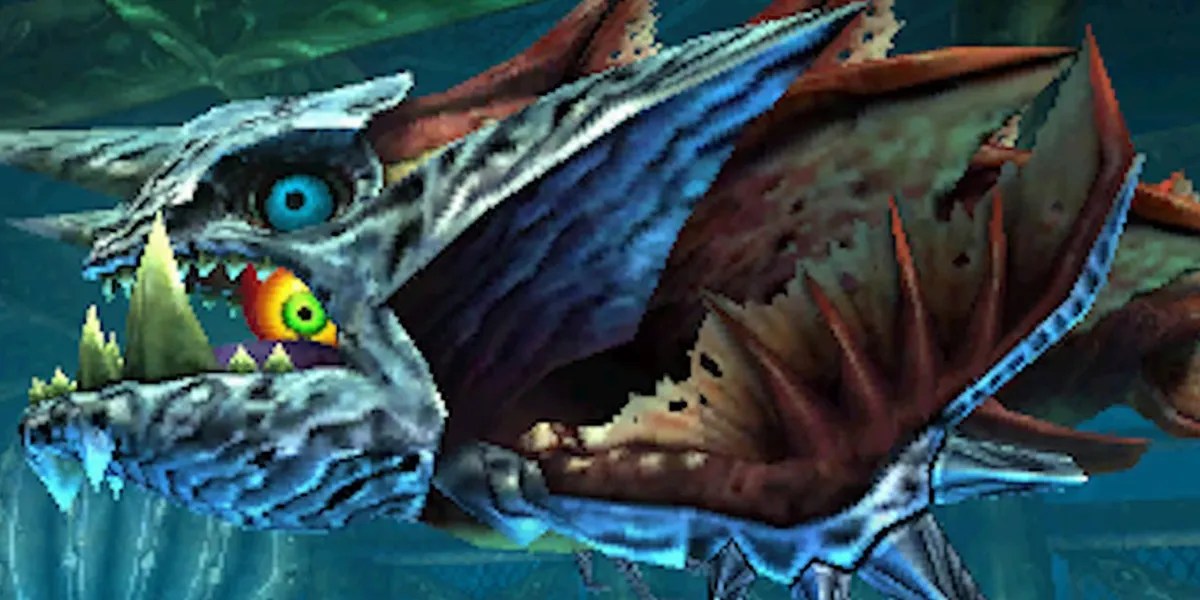The Legend of Zelda: Majora’s Mask, along with its predecessorOcarina of Time, is widely considered to be one of the most influential games of all time. Bringing a darker tone and some horror elements to the otherwise fairly joyful and light franchise,Majora’s Maskis often cited as being a revolutionary video game, leaning into its weirder narrative concepts to produce a truly unique and incredibly memorable experience.
RELATED:Zelda: Majora’s Mask Sky Secret Discovered Over 20 Years After Launch

The Quality of Life Changes Added with Majora’s Mask 3D
Majora’s Mask 3Dreleased on the Nintendo 3DS in February 2015 and was met with instant, and monumental, critical acclaim, The game receivedhigh 80s and 90s across the board, with many citing this remaster as being the definitive version of the game. Many critics pointed to the remaster’s updated visual designs and its quality of life improvements as reasons behind its widespread praise.
One of the main quality of live improvements given inMajora’s Mask 3Dis the refined control scheme. This remaster uses the New 3DS' C-Stick to control the camera, which is a marked improvement over the original’sinfamous Nintendo 64 controllerand its clunky and unresponsive camera controls. The 3DS' gyroscopic controls are also used in this remaster, making the ranged weapons feel even more intuitive and accurate to use.

The saving mechanics inMajora’s Mask 3Dwere also tweaked a little from the original. In the original game, playerscould find Owl Statuesacross Termina that would save their progress, and kick them back to the main menu. InMajora’s Mask 3D, these statues now let the player save their progress and continue playing. More Save Statues have been added to the game as well, taking the appearance of feather quills, and making the game a little more forgiving in some trickier areas.
In the originalMajora’s Mask, the Ocarina would take up a spot in Link’s inventory, and would have to be swapped in and out of the equipment buttons. InMajora’s Mask 3D, the Ocarina is permanently attached tothe 3DS' touch screen, freeing up the X and Y buttons for other useful items. To play the Ocarina, players only need to tap the button on the touch screen, and use the list of learnt songs that can also be found on the 3DS' bottom panel.
A few slight tweaks to the time mechanics were also introduced inMajora’s Mask 3D. The “Song of Double Time” gave the player the ability to skip time in the original game by six hours. This remaster allows the player to choose a specific hour in the day, rather than forcing them forward six hours at a time. The “Song of Time” has also been slightly changed, with a visual indicator showing which items the player will lose if they go back in time to a certain point.
These quality of life changes don’t massively affect the game, but they do make playing through some ofMajora’s Mask’s more outdated sections much easier. Unfortunately, it’s likely that these improvements won’t be included in theSwitch Online versionof the game.
RELATED:15 Games With A “Groundhog Day” Style Time Loop Like Deathloop
The New Content Added with Majora’s Mask 3D
Along with the numerous quality of life improvements,Majora’s Mask 3Dalso added a few new pieces of content to the game. One such addition isa new side questwhich tasks the player with curing the Gorman Troupe Leader with his hangover. Players will need to find the Troupe Leader’s mask on the first night, and will need to use that the following day to get some special milk from the Gorman brothers near the racetrack. If the milk is delivered within two minutes, the Gorman Leader will hand over the empty bottle, which acts as the 7th bottle in the game.
The real changes toMajora’s Maskin this remaster come fromthe game’s boss fights. Rather than just keep the boss fights the same as they were in the original,Majora’s Mask 3Dopted to change a handful of boss encounters, ranging from minor tweaks to complete overhauls.
Most of the bosses function fairly similarly to their original counterparts, but all dungeon bosses have received one key change: basic attacks are no longer going to defeat the boss, instead the player has to hit them multiple times to reveal a weak point, which can then be hit to defeat the boss. Along with this change, many boss fights have been altered so that the player will need to employmore varied strategies.
Odolwa, for instance, blocks the vast majority of the player’s attacks, but is vulnerable from attacks that come from above. To aid the player in this new strategy, Deku Pads are now present around the boss arena, which launch the player into the air, giving them a chance tofire upon Odolwa from above.
Some boss fights have been given multiple phases, like Gyorg, whose first phase plays out like the original’s fight, but then their second phaseforces the player underwater, encouraging the use of Zora Link. The Twinmold fight also features two distinct phases now, with the first phase tasking the player with shooting down the flying worm with their bow, and the second phase seeing the player take the Giant’s Mask, and punching the second worm to death.
While these revised boss fights do help to make the game feel more engaging and fresh for long-time fans, those who have never experiencedMajora’s Maskbefore can rest easy knowing thatthey’ll receive the original experience on Switch, for better or worse. An exact release date has yet to be revealed, butMajora’s Maskis heading to Switch Online’s Expansion Pack in February.
The Legend of Zelda: Majora’s Mask 3Dis available now on Nintendo 3DS.